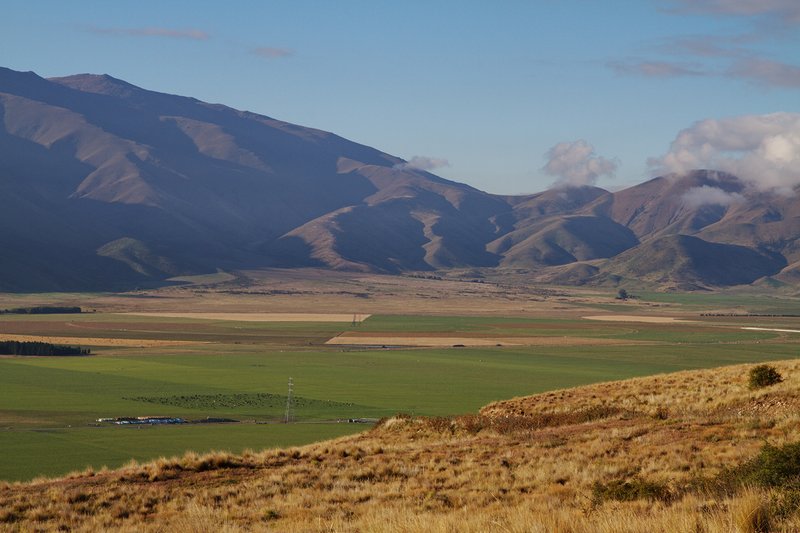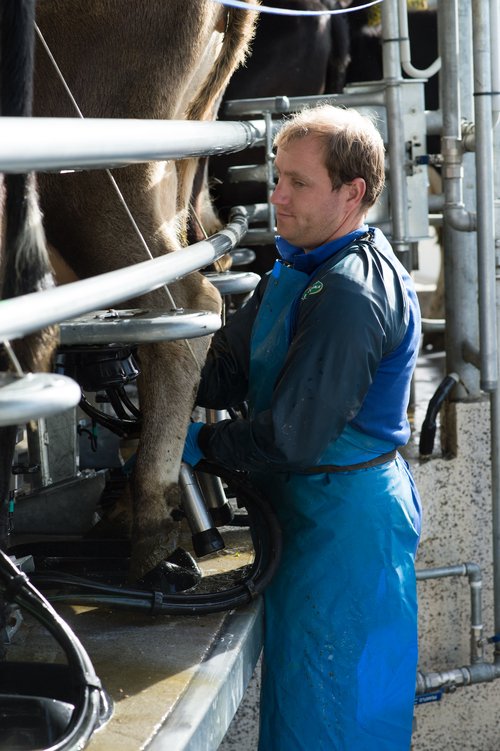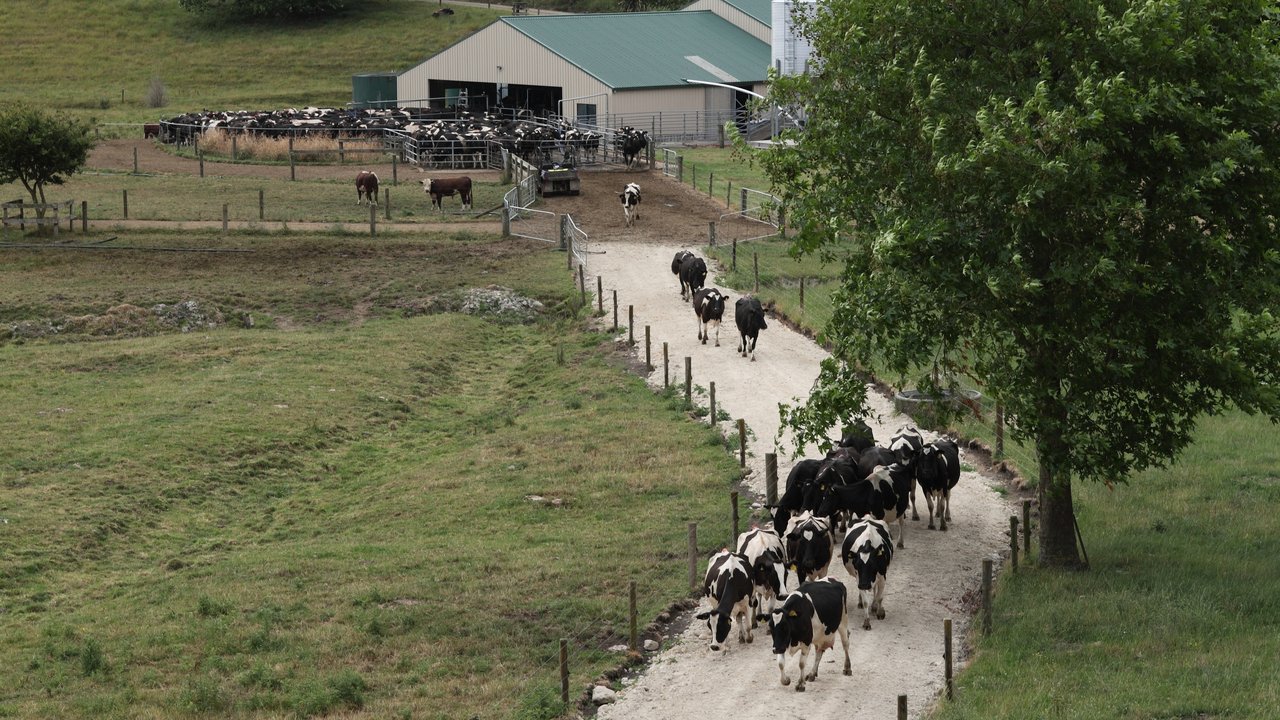The objectives of dry summer management are to:
- maximise profitable milksolids production for the rest of the current season – in a dry summer the options are to reduce feed demand or increase feed supply
- protect next season’s production and reproduction by getting all cows to body condition score (BCS) 5.0 by calving.
Reduce demand
Dispose of known culls
Do this earlier not later! Cull on: a pregnancy diagnosis, production worth (PW), mastitis, and somatic cell count. The objective is to carry as many cows as practicable beyond autumn without jeopardising next season.
Keep as many cows milking as practicable
The aim of early culling and drying off of low condition-score and/or poor producing cows is to keep as many cows as possible milking into autumn.
This is important to capture any benefits from an autumn flush in pasture growth. The later the dry period breaks, the less likely the farm will capture the carryover benefits of additional inputs, and of keeping as many cows milking as possible.
Cow body condition
Watch cow condition, particularly the younger cows (two- and three year- olds); dry this group off based on their condition score and days-from-calving.
Look at cow condition regularly, and make decisions about drying off low condition score cows.
Modify these condition score rules depending on feed available (pasture cover and supplements), average winter pasture growth rates, and expected calving date.
Reduce pressure on non-milking stock
It is important that calves and heifers continue to meet liveweight growth targets, despite the feed shortage. Consider giving calves 1 kg of meal each per day and/or pasture silage to supplement their grass diet.
If reliable grazing off is available for young stock, this will take some pressure off milking cows on the home farm.
Dried off cows also need to be well fed during a summer dry spell especially two-year-olds and autumn-calving cows.
 Increase Feed Supply
Increase Feed Supply
Avoid feeding out crops before they properly mature
Over the four weeks before maturity, crops can double the yield. It is a real loss of potential if the crops are fed off before they are mature. Plan to feed them off at maturity to allow early preparation for re-grassing.
What supplements are available?
Only feed supplements that are surplus to autumn and winter requirements. It is imperative to also save enough supplement for two to three weeks when it rains:
This equates to at least 100kg of dry matter (DM) per cow, or seven bale equivalents per cow, for the period immediately after the first significant rainfall.
Be prepared to purchase supplementary feed early
Because price is a major factor in the profitability of feeding supplement, avoid peak-demand periods by purchasing supplement early (the price of supplementary feed is driven by demand).
Be aware that during a dry summer that income will already be down, and it would be prudent to keep costs to a minimum.
When to feed supplements?
Trial results show a wide variation in milksolids (MS) response to feeding supplements in the summer.
Responses vary from 0 to 180g MS/kg DM. Variation in response is due to the pasture conditions at the time supplements were fed, and what the supplement-fed cows were compared to. The response of 180 g MS/kg DM was a result of the control herd being dried off – this was a system response to having cows in milk when it rained in the autumn, as well as a production response to the extra dry matter.
A high proportion of the response to feeding supplements during a dry summer is due to an increase in lactation days (being able to milk the cows longer and not increasing daily production per cow). The later the dry period breaks, the less likely increased days in milk will be captured, and the lower the total milksolids response to the supplement.
Whenever supplements are fed there is some substitution of pasture for supplement.
The amount of substitution depends on how severe the feed deficit is.
In the summer when it is hot, cows that are not in a severe feed deficit will not increase their feed intake when offered supplement. Rather than eat any available pasture, they’ll instead eat the supplement. Pasture that is not eaten will die, increasing the dead matter, which decreases the quality of available pasture. If rains have come, the dead pasture will decay, further reducing farm cover. There is therefore minimal response to feeding supplement under poor pasture utilisation conditions.
The response to supplements is greater when the supplements keep more cows milking for longer.
What to do when it rains
How much rain to break the drought?
After a long dry period, significant rain is required – probably 50mm-plus (ie. this is sufficient to return soil moisture deficits to within 15% of field capacity).
Supplement
Up to 50% of the pasture available before rain is lost because it is dead and quickly decays.
Cows are therefore in danger of being severely underfed after rain, and a rapid loss in cow condition can result.
To avoid this situation, it is important to have at least 100 kg DM/cow of supplement available to feed out after rain (ie. at least three weeks of supplement).
On very dry farms up to 160 kg DM/cow is required to meet 80% of the cow’s intake for 15 to 20 days after rain.
As pasture available can halve after rain, cows can be severely underfed and will require 50-75% of their intake from supplement. If feeding out before the drought, the amount required after rain will at least double in the first seven to 10 days.
After autumn rain and very rapid pasture growth, there may be opportunity to increase pasture cover by keeping paddocks on a slow rotation.
Do not speed up the rotation to fully feed the herd, as this will not allow pasture covers to increase.
During periods of rapid pasture growth, the dry matter content of the pasture is low (less than 15%) and cows physically cannot eat enough to meet requirements. Feeding supplement helps prevent this situation.
Nitrogen (N) Fertiliser
Use of fertiliser N can result in pasture responses of up to 12kg DM per kg of nitrogen.
However, autumn nitrogen responses vary considerably: the only certainty to applying N fertiliser after the autumn rains is the grass will be greener.
After a severe drought nitrogen applications can be delayed for two weeks after it has rained, as the soil has good reserves of mineralised nitrogen, and pastures take time to recover. The response period to autumn-applied N fertiliser is more than three months, and this has to be taken account of when making the final drying off decision. Note the response of 12 kg DM per kg of nitrogen does not occur over a two- to three-week period.
Once-a-day milking (OAD)
 When feed supply is limited, three milkings in two days or
OAD milkings are good options. This will take significant pressure off cows, especially if cows are walking long
distances to the shed.
When feed supply is limited, three milkings in two days or
OAD milkings are good options. This will take significant pressure off cows, especially if cows are walking long
distances to the shed.
Although there is little research to support the notion that milking cows OAD toward the end of lactation prevents condition-score loss, OAD does reduce the stress on cows walking to the shed, and can have minimal impact on milk production (where cows are severely restricted for feed).
OAD also increases the time available for other farm work, such as feeding out.
OAD can be applied across the entire herd, or across a certain mob (for example, younger cows only – those most at-risk).
Research shows that once milk production has dropped to about 11 litres/cow/day (Friesians) or 9 litres/cow/day (Jerseys), milking OAD results in little or no reduction in milk yield where energy intake is maintained. Research also shows that negative impact on milk production is greater when cows eat low-quality feed.
Cows producing less than 1.1 kg MS/cow/day may experience a small production drop (5-10%) on OAD.
When there is adequate feed after autumn rains, high-BW cows will increase their milk production when milked twice a day.
If the bulk somatic cell count (SCC) is more than 200,000 before going onto OAD, milking OAD may not be an option. Often the bulk SCC is a result of a small percentage of the cows with high counts.
These cows could be dried off or milked twice a day to keep the bulk SCC under control.
Refer to the SAMM plan for seasonal management of mastitis and somatic cells.
Dry off low producers
As summer progresses it may be necessary to reduce feed demand further. Dry off low producers in good condition and restrict their intakes to maintain body condition. If possible, get these animals off the farm to further reduce feed demand, or supply them with a cheap low-quality feed on a restricted part of the farm.
Dry off young cows or milk OAD
Young cows are still growing and need extra feed to support growth and milk production.
They are also frequently lower in the herd ‘pecking order’ and may not compete as well if feed is limited.
These cows are usually those in the poorer condition early in a dry summer, and they should be dried off early. Remember, the young cows are the long term basis of the herd, and they need to be monitored closely.
The early drying off of heifers may have little impact on feed demand, unless taken off-farm. This is because their energy requirements will be high (to maintain growth and restore lost body condition).
Irrigation restrictions
The onset of irrigation restrictions can vary greatly, both in timing, and in their extent. Irrigation restrictions caused by reduced irrigating frequency, rather than ‘amount of water for each irrigation’, are the most difficult to manage.
The best strategy is to properly irrigate the most productive parts of the farm, rather than poorly irrigating the entire farm. To do this, some recording of annual individual paddock pasture growth (or grazing frequency) will need to have been done; this will allow reliable selection of the poorest performing paddocks.
If a paddock is no longer being irrigated and it is to be re-grassed in the autumn, it should be sprayed out and hard-grazed. By removing all vegetation early, more moisture will remain in the soil (even though the soil surface will be very dry).
This extra soil moisture, along with the first autumn rains, will result in a more reliable start to new grass establishment.
Disclaimer: Advice given in this article is general in nature only. No information should be relied on, or acted upon, for a specific farm situation. LIC recommends that any farmer needing advice contacts their professional farm consultant





